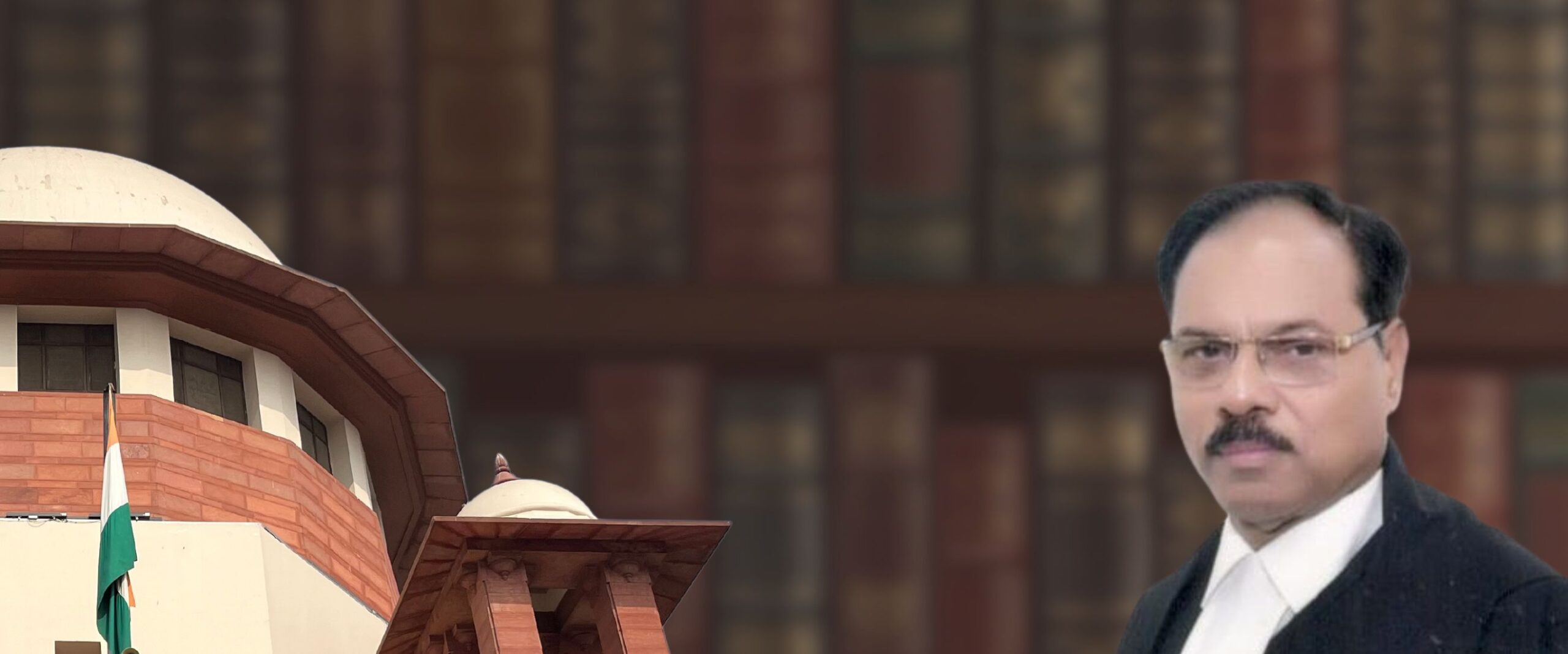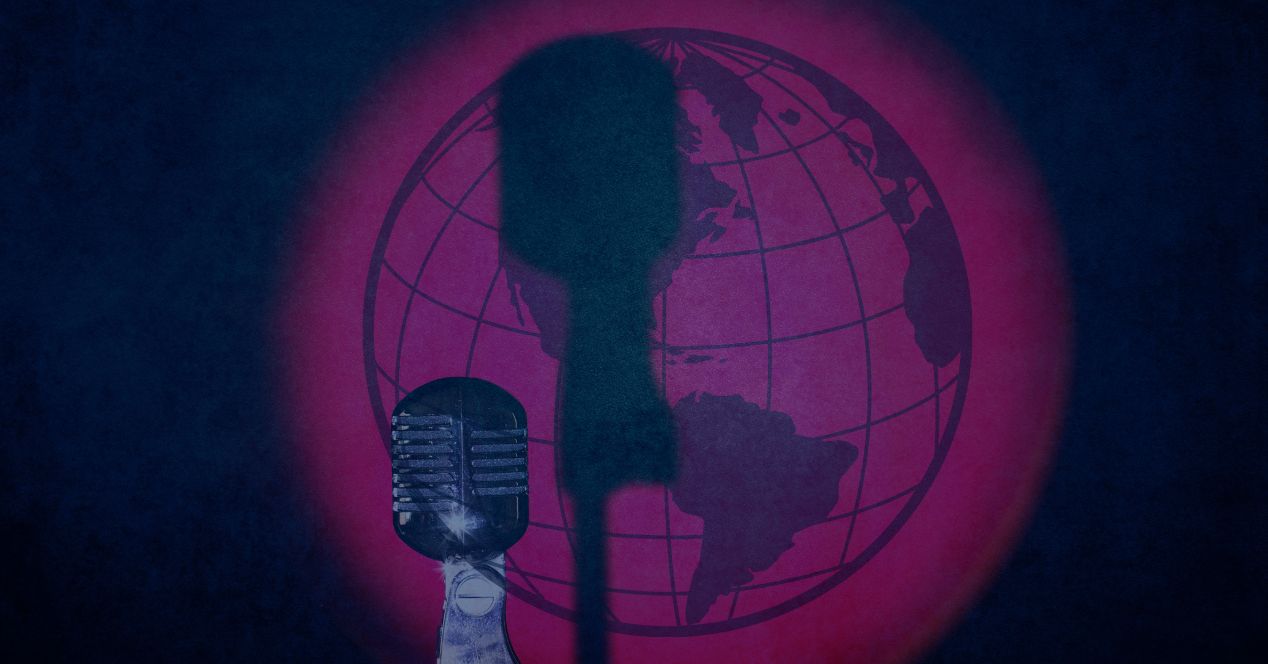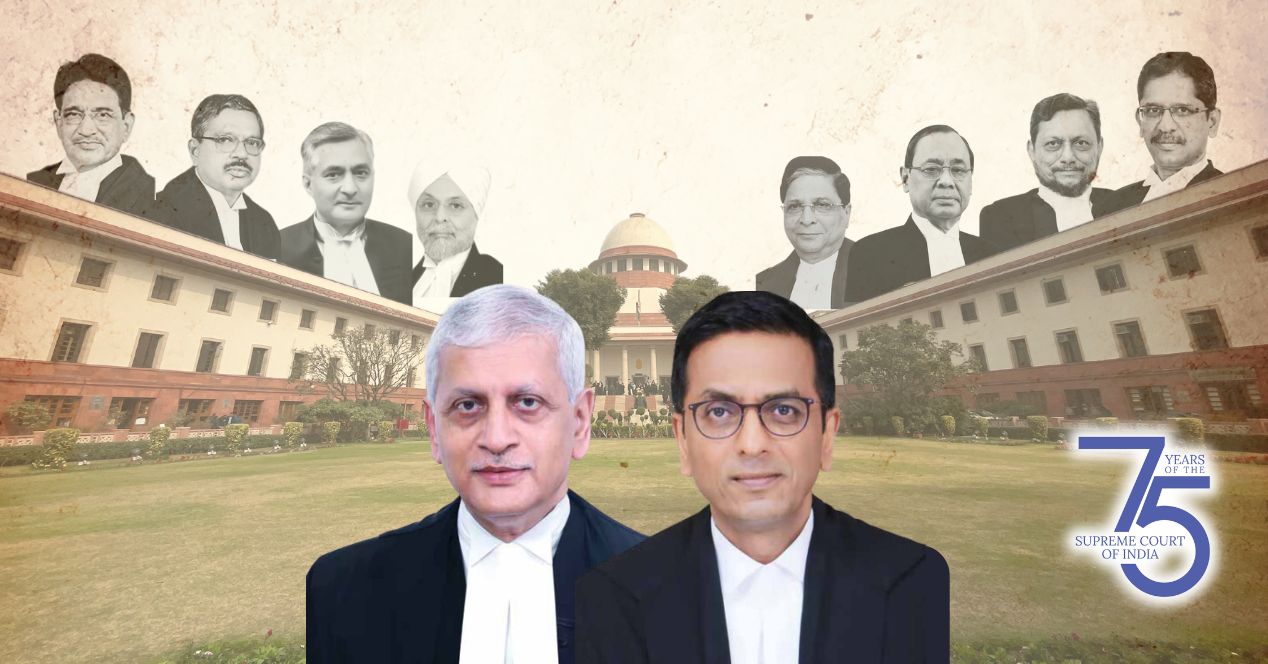Analysis
Justice Yadav ‘hate speech’ case: An acid test for the Supreme Court
Given the high stakes of impeachment, the Court evolved its own inquiry process in the 1990s. How will it play out in Justice Yadav’s case?

On 8 December 2024, Justice Shekhar Kumar Yadav, a sitting judge of the Allahabad High Court, delivered a speech at a gathering organised by the Vishwa Hindu Parishad, a right-wing Hindu organisation. While ostensibly speaking about the Uniform Civil Code, Justice Yadav seemed to endorse a system of majoritarian rule while also using phrases like ‘humaari Gita, aapki Quran’ (our Bhagavad Gita, your Quran) and a derogatory word like ‘kathmullah’. Several observers noted that the lecture fell into the category of ‘hate speech’ against Muslims. By the middle of the month, various Members of Parliament from Opposition parties had initiated a motion for impeaching Justice Yadav.
Impeachment is a drawn-out process with many steps. First, 100 members of the Lok Sabha or 50 members of the Rajya Sabha have to submit a motion to the Speaker or Chairman. If the motion is admitted, a three-member committee investigates the charges. Parliament can take up consideration of the motion only if the committee finds the judge guilty. The President can order the removal of a judge only if both houses consecutively pass a motion to that effect by special majority. Before this instance, impeachment motions had been initiated only seven times in either house since the Constitution came into force in 1950. None of them were successful.
In the 1990s, a string of Supreme Court judgements evolved an in-house mechanism to investigate allegations of judicial misconduct. Under this, the Chief Justice of India can take note of a complaint and form a three-member judicial committee to conduct a fact-finding exercise. If the committee is convinced of ‘misbehaviour and incapacity’, the Chief Justice can impose ‘minor corrective measures’ which include advising the judge to resign or voluntarily retire, and withholding judicial work if the judge refuses to comply.
On 17 December 2024, Justice Yadav reportedly appeared before the Supreme Court Collegium and was told that his remarks were ‘avoidable’. A month later, in a response to the Chief Justice of the Allahabad High Court, Justice Yadav noted his decision to stand by his remarks. On 1 February 2025, a day after his retirement, Justice Hrishikesh Roy confirmed to the media that CJI Sanjiv Khanna had initiated an in-house inquiry against Justice Yadav.
Justice Yadav’s case is probably the first recorded instance of a judge in India facing a disciplinary trial for hate speech. Previous inquiries for which some information is available have centred on allegations for finance-related offences like corruption. The situation poses an interesting challenge to the Chief Justice and to the standing of the top court on disciplinary issues.
To understand the limitations of both the impeachment and in-house inquiry processes, it would be useful to look at how they have developed.
Articles and legislations
In 1949, Justice S.P. Sinha of the Allahabad High Court became the only Indian judge removed under Section 220(2)(b) of the Government of India Act, 1935, which provided for removal on grounds of “misbehaviour or infirmity of mind or body.” A detailed inquiry was conducted by the Federal Court following a reference by the Governor-General.
In the Constituent Assembly, Sir Alladi Krishnaswamy Ayyar had opposed K. Santhanam’s and M. Ananthasayanam Ayyangar’s proposal for an exclusively judicial tribunal. Instead, he advocated for a blend of judicial and political processes. As a result, while the inquiry could be judicial, the removal would be in the hands of Parliament.
This was reflected in Article 124(4) of the Constitution, read alongside provisos (b) to Articles 124(2) and 217(1), where Parliament was entrusted with the authority to move an address to the President for the removal of a sitting judge on the grounds of ‘proved misbehaviour or incapacity’. Article 124(5) left Parliament with the power to “regulate the procedure for the presentation of an address for the investigation and proof of the misbehaviour or incapacity.”
A bill under this article was introduced in 1964. The Judges (Inquiry) Bill sought to provide a structure and framework for addressing judicial misconduct. The Bill underwent extensive scrutiny, with luminaries like C.K. Daphtary and M.C. Setalvad refining its provisions before it finally came into force as the Judges (Inquiry) Act, 1968.
The need for the Act arose due to instances where judges, despite being unwell or facing serious allegations, refused to step down. The Act laid down a systematic process: a motion initiated by a specified number of parliamentarians could lead to the formation of a three-member inquiry committee by the leader of the House.
The Ramaswami saga
It would take until the 1990s for the Court to devise its in-house process for judicial inquiry. Before that, in the 1970s, there was the Veeraswami case. In 1976, a complaint was filed against K. Veeraswami, then Chief Justice of the Madras High Court. The subsequent chargesheet noted that the judge had accumulated disproportionate assets by means of benami transactions. When the Special Judge issued notice for his appearance, Veeraswami moved the High Court to quash the proceedings.
The High Court rejected his plea in a 2:1 majority. Veeraswami filed an appeal in the Supreme Court. While dismissing his appeal, the Court added a layer of protection for the judiciary. It held that no criminal case under Section 154 of the Criminal Procedure Code could be registered against a judge in the higher judiciary without consulting the Chief Justice of India. If the allegations were against the CJI, other senior judges of the Supreme Court would have to be consulted.
The case that put the system to the test for the first time involved Justice V. Ramaswami, who was then a Supreme Court judge. He was accused of financial impropriety, including extravagant spending on home improvement, during his tenure as the Chief Justice of the Punjab and Haryana High Court. Prominent legal figures of the time—including Soli Sorabjee, K. Parasaran, K.K. Venugopal and Dr. Y.S. Chitale—pressed for action.
In an unprecedented move, Chief Justice Sabyasachi Mukharji addressed the Supreme Court Bar in open court, acknowledging the controversy but clarifying that he lacked the legal authority to investigate a sitting judge. He advised Ramaswami to step back from judicial duties. Subsequently, an internal committee led by Justice B.C. Ray examined the matter but found no grounds for action. Despite this, the allegations refused to fade, prompting a motion which led the Speaker to constitute the Justice P.B. Sawant Committee in 1991. Justice V. Ramaswami did not participate in the inquiry in spite of notice.
What followed was a dramatic sequence of legal and political manoeuvring. The P.V. Narasimha-led coalition government, which took charge in the wake of Rajiv Gandhi’s assassination, deemed the impeachment motion of the 9th Lok Sabha lapsed and chose not to proceed with the inquiry.
In Sub-Committee on Judicial Accountability v Union of India (1991), the Supreme Court had to answer the question of whether the motion lapsed with the formation of a new government. It ruled that it did not. It also noted that the removal of judges involved “a judicious blend of the political and judicial processes.”
On the question of whether a judge can continue work while an inquiry is open, the bench said that it was a matter of “propriety” and not legality—it noted that the CJI “is expected to find a desirable solution to avoid embarrassment to the learned judge and to the institution.”A year later, on 20 July 1992, the committee submitted its report, confirming 10 out of 14 charges against Ramaswami.
Ramaswami sought access to the committee’s report before its submission to Parliament. In Sarojini Ramaswami v Union of India (1992), the Supreme Court denied his request while holding that a judge could only contest the findings of the committee if the President ordered removal. Despite all the scrutiny and political debate, the motion for removal failed to secure the required two-thirds majority in the Lok Sabha, allowing Ramaswami to remain in office.
The Restatement
The shadow of the Ramaswami affair hung over the Chief Justices’ Conference, held in New Delhi in September 1992. There, a resolution was passed emphasising the need to restate the “universally accepted norms, guidelines and conventions reflecting the high values of judicial life.”
A draft of this restatement was subsequently circulated to the Chief Justices of high courts. Following feedback, in April 1997, the CJI reconstituted a committee to finalise the ‘Restatement of Values of Judicial Life.’ This final draft reflected the shared commitment to uphold the integrity and values of judicial life.
The Ramaswami case underscored the challenges of judicial impeachment. It also raised broader concerns about viability. If removal by parliamentary process was nearly impossible, how could accountability be ensured? The case of Justice A.M. Bhattacharjee provided a partial answer.
In C. Ravichandran Iyer v Justice A.M. Bhattacharjee (1995), the Supreme Court proposed an alternative: an in-house peer review mechanism. This approach allowed the judiciary to address misconduct without invoking the high-stakes impeachment process. It recognised that some cases, while serious, did not warrant removal but still required corrective measures.
An internal course of action was devised by a five-judge committee constituted in furtherance of the in-house procedure devised in Justice Bhattacharjee’s case (the judge had already demitted office by this time).
Under this procedure, complaints against a sitting judge of the High Court are made to the Chief Justice of the High Court or the Chief Justice of India. If the CJI finds a complaint warrants further inquiry, he forms a three-member committee consisting of two Chief Justices of High Courts other than the High Court to which the judge belongs and one High Court judge. Similarly, the committee investigating the complaint of a Supreme Court judge will comprise Supreme Court judges.
The judge can present their case but there is no formal trial. The committee may conclude that the complaint is baseless, merits removal proceedings or requires less stringent action. A copy of the report is given to the judge.
If the committee finds merit in the allegations, the CJI can deploy corrective measures. This includes advising the judge to resign or take voluntary retirement. If the judge refuses, the Chief Justice of the concerned High Court is advised not to allocate work to the judge, and the President and Prime Minister are informed. If the misconduct does not warrant removal, the CJI personally advises the judge and may place the committee’s report on record.
A legislative attempt in 2005
Over the years, there have been efforts to refine the 1968 Act. In 2005, the Judges (Inquiry) Bill proposed that a five-member National Judicial Council look into the complaint instead of the three-member inquiry committee set up by the leader of the House.
The Bill envisaged a ‘complaint procedure’ and a ‘reference procedure’. In the complaint procedure, complaints could be made against sitting judges which would be confirmed by the Council. The report would be sent to the President who would then forward it to the Parliament to initiate removal proceedings. Under the reference procedure, the Council could submit its report to the Speaker or Chairman who made the reference on receipt of a motion for removal.
The Law Commission, which was asked to study the Bill, also looked at global models to find a balanced approach that upheld both judicial independence and necessary oversight. It recommended a broad definition of ‘misbehaviour’ which would include breach of the 1997 Code of Conduct, the result of the Restatement exercise.
So far as ‘incapacity’ is concerned, the Law Commission recommended it should be further qualified as “one which is or is likely to be of a permanent character which does not enable him to perform his judicial functions properly.” The Law Commission also recommended that the law empower the proposed National Judicial Council to impose minor measures in complaint cases, including advisories, warnings, temporary withdrawal of judicial work, voluntary retirement requests and public and private censure. However, the 2006 Bill was not passed and subsequently lapsed.
Rising hate speech
In April 2022, Law Minister Kiren Rijiju told the Lok Sabha that a total of 1631 complaints had been registered against judges on the Centralised Public Grievance Redress and Monitoring System, an online platform to file complaints against government services, between January 2017 and December 2021. Each of these complaints were forwarded to the Chief Justice of India. However, details of any in-house procedure have been rarely made public. The Wire, a digital publication, recently reported that a Right to Information application on the matter was turned down by the Supreme Court Registry.
The consequence of this opacity is that there is no information about the kind of offences against sitting judges—for instance, have there been previous instances of alleged hate speech that were dealt with outside the public view?
On the specific issue of hate speech, there are two broader problems to be considered. Hate speech, by its very nature, is an offence with political undertones. In recent times, the deployment of Islamophobic or anti-minority rhetoric has emerged from and received support within Hindu right-wing groups.
Judges have not been immune to such participation. In September 2024, Karnataka High Court judge V. Srishananda was summoned to Delhi after he referred to a Muslim-dominated neighbourhood as ‘mini-Pakistan’ during a hearing. A petition opposing the appointment of Justice Victoria Gowri to the Madras High Court suggested a history of remarks against the Christian and Muslim communities. The matter was subsequently raised in the Rajya Sabha, too.
These instances must be viewed within the wider phenomenon of judges increasingly crossing paths with political lobbies and organisations. An in-depth report published by The Caravan in October 2024 revealed that nine of the 33 sitting Supreme Court judges at the time had headlined events organised by a right-wing lawyers’ organisation affiliated to the Rashtriya Swayamsevak Sangh, the ideological progenitor of the Bharatiya Janata Party (Note: The author of the Caravan story is one of the authors of this article). This concern is exacerbated by the trend of some former judges joining political parties and accepting positions in the executive after retirement.
Justice Yadav’s speech came at a Vishva Hindu Parishad event—an organisation that has been banned on previous occasions, and named in a UK-government enquiry for its involvement in the 2002 Gujarat riots. Further, Justice Yadav has received support from Uttar Pradesh Chief Minister Yogi Adityanath, a key figure in the ruling BJP.
Time to codify the Court’s ‘soft power’?
Let us return for a moment to the Judges Inquiry Bill of 2005. That Bill introduced the concept of a National Judicial Council but made no provision for ‘minor measures’.
In its 195th report, the Law Commission had argued in favour of encoding the following minor measures if a complaint is found meritorious: (1) Issuing advisories; (2) Issuing warnings; (3) Withdrawal of judicial work, pending and future, for a limited time; (4) Requesting that the judge may voluntarily retire; (5) Censure or admonition, public or private. An updated bill outlining these five minor measures was tabled in 2006 but it was never passed.
In 2010, a new Bill, the Judicial Standards and Accountability Bill, was introduced in the Lok Sabha. The Bill introduced an Oversight Committee which would include a retired Chief Justice of India, a Supreme Court judge, a High Court Chief Justice nominated by the CJI, the Attorney General and a nominee of the President. A Scrutiny Panel would scrutinise the complaints, while the Oversight Committee would, through an investigation committee, look into the charges and take a call on whether to refer the judge for removal proceedings or impose measures if found guilty.
If the charges were serious and warranted removal, the Committee could request the judge to retire. If such a request was not complied with, it could recommend removal through impeachment. This Bill, too, ended up lapsing.
Ideally, each of the minor measures should be clearly codified. Different offences like financial embezzlement, hate speech, sexual harassment conduct or an escalated disagreement with other judges should not result in minor measures of similar intensity. Codification could be the first step to acknowledge these nuances. That’s why a new judicial inquiries bill, which reproduces the core principles of the 2006 Bill and further refines the categories of offences and the measures to be taken in response, could be beneficial.
Several jurisdictions have codified the imposition of minor measures. In the US, the Judicial Improvements Act of 2002 explicitly allows Judicial Councils to impose minor measures. These include requesting the judge to retire voluntarily, private or public censure or temporarily refraining from assigning them cases. Similarly, under Section 108 of the UK Constitutional Reform Act of 2005, the Lord Chief Justice may issue formal advice, a formal warning, a formal reprimand or even suspend a judge. Statutes permitting the imposition of minor measures are also applicable in provinces of Germany and Canada.
In the interview following his retirement, Justice Roy remarked that the Supreme Court’s power to respond to situations such as Justice Yadav’s case is a “soft” one. While it is true that there has not been a demonstrable instance of the Court baring its teeth in situations of judicial censure, the evolution of the in-house process indicates that it could take a stance when the situation comes to it.
Justice Yadav’s case, which is playing out in public glare, and his own lack of remorse about the remarks, has put the Court in a tighter spot than usual. Irrespective of which side the Court lands, this instance will demonstrate where it stands on transparency, accountability and separation of powers.




